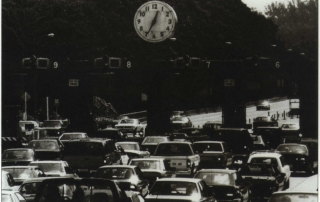ACCESS 04, Spring 1994
Introduction
Melvin M. Webber
It seems that transportation planners everywhere are looking for ways of reducing vehicle miles of travel (VMT) by automobile, even as citizens seem determined to drive more. The trend may be especially evident here in California where everyone seems to believe that use of cars is excessive, having conspired to foul the air, congest the highways, provoke traffic accidents, and erode the quality of people’s lives. In response, a lot of creative remedies have been invented – schemes to entice travelers into carpools and public transit and schemes to induce them to stay home.







